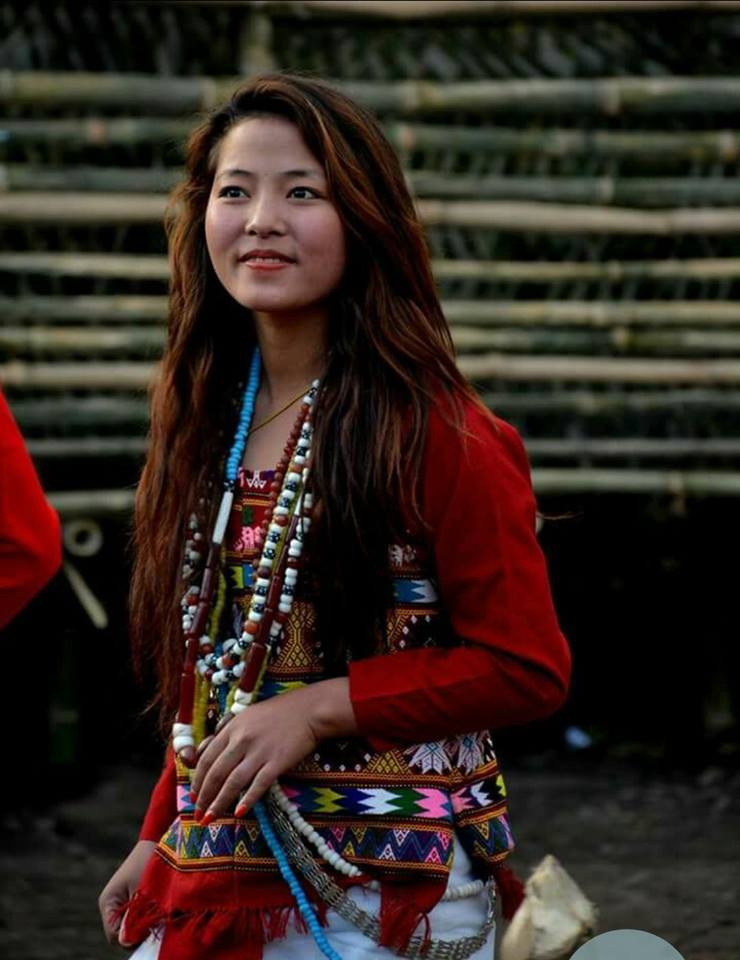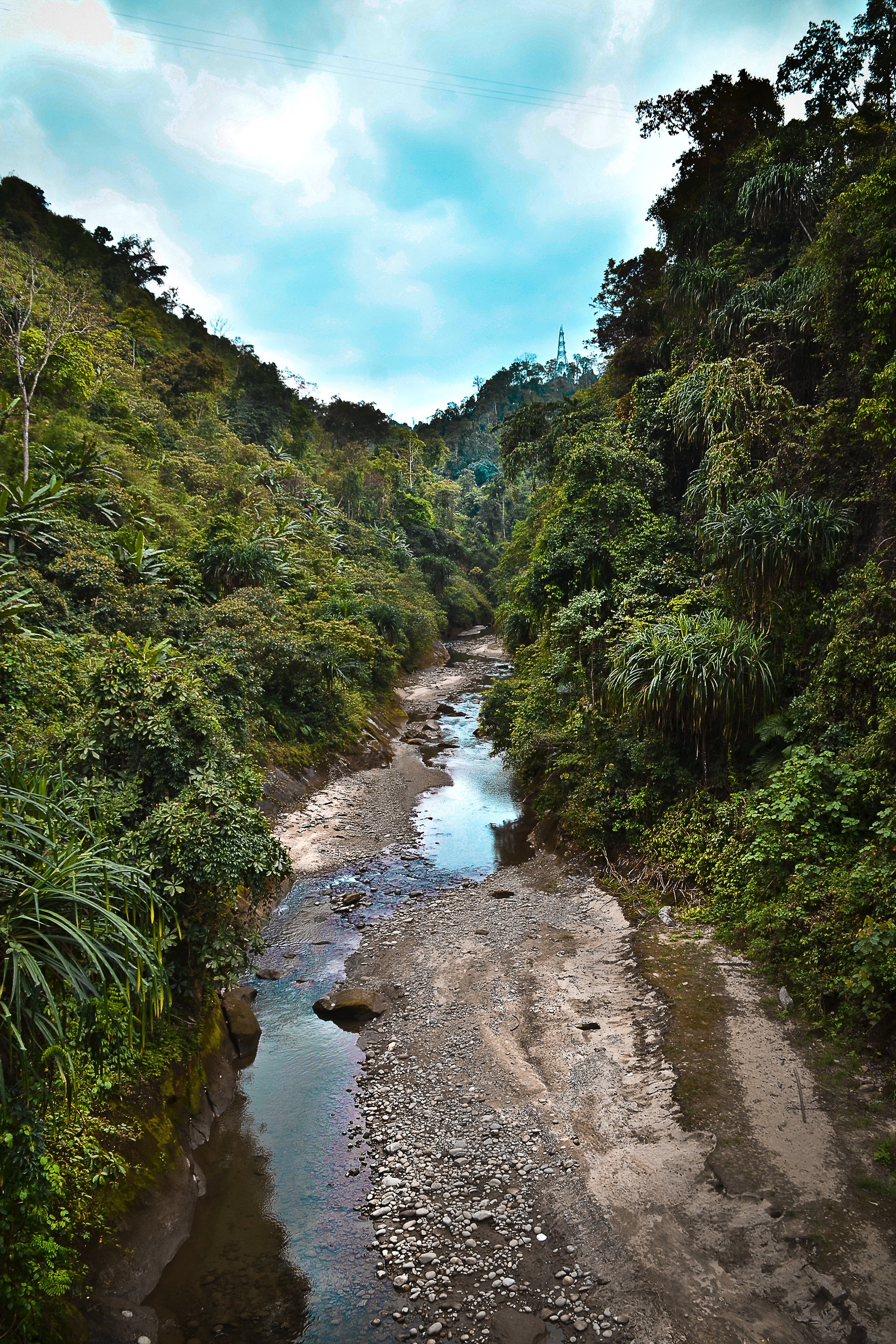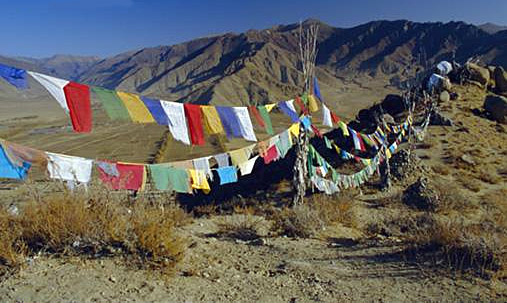|
Miji People
The Miji, also known by the names of Sajolang and Damai, inhabit the districts of West Kameng, East Kameng and a minuscule region of Kurung Kumey in Arunachal Pradesh, India. Their population of 37,000 are found near the lower parts of the sub-Himalayan hills bordering Assam; they speak the Sajalong language. The word Miji is derived from two distinct words 1) Mai means fire and 2) ji meaning Giver. The word/name came into being after the Aka ( Hrusso) community regarded the Sajolang/Dammai people for their gracious help during the past (pre-historic period). Dress The traditional costume of Miji women consists of an ankle-length white garment with a beautifully decorated red jacket. Unlike the majority of other tribes of Arunachal Pradesh, India; the Miji people wear silver ornaments, and glass/brass based necklaces. Indigenous cosmetics are made from pine resin and coal ( specially during marriage ceremonies). The traditional dress of Miji community constitute of 1) Gr ... [...More Info...] [...Related Items...] OR: [Wikipedia] [Google] [Baidu] |
West Kameng
West Kameng (pronounced ) is a district of Arunachal Pradesh in northeastern India. It accounts for 8.86% of the total area of the state. The name is derived from the Kameng river, a tributary of the Brahmaputra, that flows through the district. History The area around the Kameng river has traditionally come under the control of the Mon kingdom, Bhutan, Tibet and the Ahom kingdom. Tibetan Buddhism got a strong foothold among the tribal groups as early as in the 7th century, where the Kachen Lama constructed the Lhagyala Gompa in Morshing. Whenever loose control was exerted over the area, small, feudal chiefdoms ruled by the Miji and the Aka chiefs dominated control over the area. This can be evidenced in the fact that ruined fortresses like those in Bhalukpong constructed in the 10th to 12th century and the Dirang fort, which was constructed in the 17th century to defend against invasions from neighbouring chiefdoms. Upon the arrival of the British, the entire area b ... [...More Info...] [...Related Items...] OR: [Wikipedia] [Google] [Baidu] |
Sajalong Language
Miji (autonym: Dmay), also Dhammai or Sajolang, is a cluster of possibly Sino-Tibetan languages in Arunachal Pradesh, northeastern India. "Dialects" include at least two distinct languages, which are not particularly close, with only half of the vocabulary in common between the languages of East Kameng District and West Kameng District. Long assumed to be Sino-Tibetan languages, they may be a small independent language family. Varieties There are 3 varieties of Miji. *Western Miji: spoken in and around Nafra and Thrizino circles, West Kameng District. Western Miji speakers refer to themselves as the Sajalang (''sadʑalaŋ'') or Dhəmmai (''ðəmmai'') (Bodt & Lieberherr 2015:70). *Eastern Miji: spoken in Lada Circle,Blench, Roger. 2015''The Mijiic languages: distribution, dialects, wordlist and classification'' m.s. East Kameng District. Eastern Miji speakers refer to themselves as the Nəmrai (''nəmrai'') (Bodt & Lieberherr 2015:70). Bangru, sometimes called Northern Miji, i ... [...More Info...] [...Related Items...] OR: [Wikipedia] [Google] [Baidu] |
Tribes Of Arunachal Pradesh
The Indian state of Arunachal Pradesh has a total population of roughly 1.4 million (as of 2011) on an area of 84,000 km2, amounting to a population density of about 17 pop./km2 (far below the Indian average of 370 pop./km2 but significantly higher than similarly mountainous Ladakh). Much of Arunachal Pradesh is forested. The "indigenous groups" account for about two thirds of population, while immigrants, mostly of Bengali/Hindi belt origin, account for a third. List of tribes The ''Scheduled Castes and Scheduled Tribes Lists (Modification) Order'' (1956 and as inserted by Act 69 of 1986) lists twelve tribes of Arunachal Pradesh explicitly, but makes explicit that the list is non-exhaustive by noting that "all tribes of the State, including" those listed are to be considered "Scheduled". There are 26 major tribes and more than 100 sub tribes in Arunachal Pradesh. The twelve tribes listed are: Adi (Abor), Aka, Apatani, Nyishi, Tagin, Galo, Khampti, Mishmi, Momba (Monpa ... [...More Info...] [...Related Items...] OR: [Wikipedia] [Google] [Baidu] |
A Sacrificial Alter Of The Bangru Tribe
A, or a, is the first letter and the first vowel of the Latin alphabet, used in the modern English alphabet, the alphabets of other western European languages and others worldwide. Its name in English is ''a'' (pronounced ), plural ''aes''. It is similar in shape to the Ancient Greek letter alpha, from which it derives. The uppercase version consists of the two slanting sides of a triangle, crossed in the middle by a horizontal bar. The lowercase version can be written in two forms: the double-storey a and single-storey ɑ. The latter is commonly used in handwriting and fonts based on it, especially fonts intended to be read by children, and is also found in italic type. In English grammar, " a", and its variant " an", are indefinite articles. History The earliest certain ancestor of "A" is aleph (also written 'aleph), the first letter of the Phoenician alphabet, which consisted entirely of consonants (for that reason, it is also called an abjad to distinguish it f ... [...More Info...] [...Related Items...] OR: [Wikipedia] [Google] [Baidu] |
Lhoba
Lhoba (English translation: ; ; bo, ལྷོ་པ།) is any of a diverse amalgamation of Sino-Tibetan-speaking tribespeople living in and around Pemako, a region in southeastern Tibet including Mainling, Medog and Zayü counties of Nyingchi and Lhünzê County of Shannan, Tibet. In 1965 the Chinese government officially recognised Lhoba as one of the 56 ethnic groups in China. Lhobas are the smallest ethnic minority in China. Lhobas, with respect to the Chinese perception of Southern Tibet (administered by India as Arunachal Pradesh), have been part of Chinese documentary films and articles. This has been criticised as propaganda by commentators such as Claude Arpi. Etymology Lhoba means "southerners". History The area nowadays inhabited by the modern Lhoba people was known in medieval texts as ''Lhoyü'' (or ''Luoyu'', ''lho-yul'', ལྷོ༌ཡུལ་). Lhoyü is now the name of an area in Tibet, while Lower Lhoyü is part of the Indian state of Arunachal Pr ... [...More Info...] [...Related Items...] OR: [Wikipedia] [Google] [Baidu] |
Bomdila
Bomdila is the headquarters of West Kameng district in the state of Arunachal Pradesh in India. Bomdila is one of the 60 constituencies of the state of Arunachal Pradesh. Geography and Climate Bomdila is located at . It has an average elevation of 2415 metres (7923 feet). Climate: In Bomdila, the wet season is cool and mostly cloudy and the dry season is cold and clear. Over the course of the year, the temperature typically varies from 31 °F to 66 °F and is rarely below 27 °F or above 70 °F. Demographics India census, Bomdila had a population of 6685. Males constitute 54% of the population and females 46%. Bomdila has an average literacy rate of 69%, higher than the national average of 59.5%; with male literacy of 75% and female literacy of 63%. 13% of the population is under 6 years of age. It is inhabited by the Monpa, Sherdukpen, Miji, Bugun (Khowa) and Aka tribes. Languages According to Census 2011, Bhotia is Spoken by 2,479 people ... [...More Info...] [...Related Items...] OR: [Wikipedia] [Google] [Baidu] |
Prayer Flags
A Tibetan prayer flag is a colorful rectangular cloth, often found strung along trails and peaks high in the Himalayas. They are used to bless the surrounding countryside and for other purposes. Prayer flags are believed to have originated within the religious tradition of Bon. Barker, page 14 In Bon, shamanistic ''Bonpo'' used primary-colored plain flags in Tibet. Traditional prayer flags include woodblock-printed text and images. History Nepal Sutras, originally written on cloth banners, were transmitted to other regions of the world as prayer flags.Barker, p. 13 Legend ascribes the origin of the prayer flag to the Gautama Buddha, whose prayers were written on battle flags used by the ''devas'' against their adversaries, the ''asuras''.Beer, p. 60 The legend may have given the Indian '' Bhikṣu'' a reason for carrying the heavenly banner as a way of signifying his commitment to ''ahimsa''.Wise, pp. 11–12 This knowledge was carried into Tibet by 800 CE, and the actual f ... [...More Info...] [...Related Items...] OR: [Wikipedia] [Google] [Baidu] |
Losar
Losar (; "new year"William D. Crump, "Losar" in ''Encyclopedia of New Year's Holidays Worldwide'' (McFarland & Co.: 2008), pp. 237-38.) also known as Tibetan New Year, is a festival in Tibetan Buddhism. The holiday is celebrated on various dates depending on location (Tibet, Bhutan, Nepal, India) tradition. The holiday is a new year's festival, celebrated on the first day of the lunisolar Tibetan calendar, which corresponds to a date in February or March in the Gregorian calendar. In 2020, the new year commenced on the 24th of February and celebrations ran until the 26th of the same month. It also commenced the Year of the Male Iron Rat. The variation of the festival in Nepal is called ''Lhochhar'' and is observed about eight weeks earlier than the Tibetan Losar. History Losar predates the arrival of Buddhism in Tibet and has its roots in a winter incense-burning custom of the Bon religion. During the reign of the ninth Tibetan king, Pude Gungyal (317-398), it is said that ... [...More Info...] [...Related Items...] OR: [Wikipedia] [Google] [Baidu] |
Pine Resin
In polymer chemistry and materials science, resin is a solid or highly viscous substance of plant or synthetic origin that is typically convertible into polymers. Resins are usually mixtures of organic compounds. This article focuses on naturally occurring resins. Plants secrete resins for their protective benefits in response to injury. The resin protects the plant from insects and pathogens. Resins confound a wide range of herbivores, insects, and pathogens, while the volatile phenolic compounds may attract benefactors such as parasitoids or predators of the herbivores that attack the plant. Composition Most plant resins are composed of terpenes. Specific components are alpha-pinene, beta-pinene, delta-3 carene, and sabinene, the monocyclic terpenes limonene and terpinolene, and smaller amounts of the tricyclic sesquiterpenes, longifolene, caryophyllene, and delta-cadinene. Some resins also contain a high proportion of resin acids. Rosins on the other hand are less v ... [...More Info...] [...Related Items...] OR: [Wikipedia] [Google] [Baidu] |
Miji Women
Miji may refer to: *Miji people, an ethnic group of north-east India *Miji language Miji (autonym: Dmay), also Dhammai or Sajolang, is a cluster of possibly Sino-Tibetan languages in Arunachal Pradesh, northeastern India. "Dialects" include at least two distinct languages, which are not particularly close, with only half of the ..., a Sino-Tibetan language See also * Mije (other) {{disambiguation ... [...More Info...] [...Related Items...] OR: [Wikipedia] [Google] [Baidu] |
A Young Miji Girl
A, or a, is the first letter and the first vowel of the Latin alphabet, used in the modern English alphabet, the alphabets of other western European languages and others worldwide. Its name in English is ''a'' (pronounced ), plural ''aes''. It is similar in shape to the Ancient Greek letter alpha, from which it derives. The uppercase version consists of the two slanting sides of a triangle, crossed in the middle by a horizontal bar. The lowercase version can be written in two forms: the double-storey a and single-storey ɑ. The latter is commonly used in handwriting and fonts based on it, especially fonts intended to be read by children, and is also found in italic type. In English grammar, " a", and its variant " an", are indefinite articles. History The earliest certain ancestor of "A" is aleph (also written 'aleph), the first letter of the Phoenician alphabet, which consisted entirely of consonants (for that reason, it is also called an abjad to distinguish it f ... [...More Info...] [...Related Items...] OR: [Wikipedia] [Google] [Baidu] |
Assam
Assam (; ) is a state in northeastern India, south of the eastern Himalayas along the Brahmaputra and Barak River valleys. Assam covers an area of . The state is bordered by Bhutan and Arunachal Pradesh to the north; Nagaland and Manipur to the east; Meghalaya, Tripura, Mizoram and Bangladesh to the south; and West Bengal to the west via the Siliguri Corridor, a wide strip of land that connects the state to the rest of India. Assamese and Boro are the official languages of Assam, while Bengali is an additional official language in the Barak Valley. Assam is known for Assam tea and Assam silk. The state was the first site for oil drilling in Asia. Assam is home to the one-horned Indian rhinoceros, along with the wild water buffalo, pygmy hog, tiger and various species of Asiatic birds, and provides one of the last wild habitats for the Asian elephant. The Assamese economy is aided by wildlife tourism to Kaziranga National Park and Manas National Park, which are ... [...More Info...] [...Related Items...] OR: [Wikipedia] [Google] [Baidu] |



.jpg)


.jpg)
